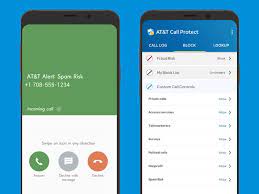Your smartphone is a lot of things—a way to communicate with your loved ones, a tool to share your world, an occasional gaming console—but a vessel for ads and marketing campaigns should not be one of them.
Unfortunately, robocalls and spam calls are a serious problem for many of us, meaning we waste precious minutes fending off incoming calls we’re absolutely not interested in.
If you’re one of the approximately 328 million people who have received robocalls this year, know you can fight back with the help of your carrier, built-in options on your phone, or third-party apps.
AT&T was the first network to turn on automatic fraud blocking and spam call alerts for new users, and today it’s available to all users. You can also install the AT&T Call Protect app for Android and iOS, which will filter out unwanted calls and block specific numbers. If spam calls do get through, though, you can report them directly to AT&T.
Verizon customers, meanwhile, have access to Call Filter, a free app that comes pre-installed on Verizon-supplied Android phones and can be independently installed on iOS and other Android devices. The app warns you about potential spam calls as they come in and blocks suspected robocallers according to how aggressive you want to be with your filtering. You can report numbers via the app too, but to set up a personal block list, you’ll have to sign up for the $3-a-month Call Filter Plus service.
If you’re using T-Mobile, you’ve got a suite of tools to pick from. Scam ID is on your phone by default, and works with your device’s existing caller ID function to warn you if a call might be unwanted. On top of that, you can download the free Scam Shield app for Android and iOS to get more control over blocking specific numbers. Within the app, you can toggle on Scam Block, which will block suspicious calls before they get to you. There’s also Scam Shield Premium, which lets you send telemarketing and political calls directly to voicemail. The upgrade costs $4 a month, but it’s free if you’re enrolled in the Magenta Plus (from $85 per month).
You can also add yourself to the FCC’s National Do Not Call Registry. In theory, this should start stopping telemarketing calls 31 days after you sign up, but it won’t protect you against calls from political and charitable organizations, or scammers who choose to ignore the registry. You can also report unwanted calls directly to the FCC.
Samsung phones have a feature called Smart Call, which might be on by default, depending on your carrier. If it’s not, just pick Caller ID and spam protection in Call Settings from Settings to turn it on. It will try to identify unwanted callers as they reach your phone, using a central database of suspect numbers. You can block and report numbers from right inside the app too, but it’s up to you whether you take or reject each call.
Google Pixel phones also have a built-in spam control feature. From the Phone app, tap the three dots in the top right, then choose Settings. On the next screen, pick Spam and Call Screen, and turn See caller & spam ID on. Google will subsequently attempt to warn you when it suspects an incoming call is spam. If you don’t want to decide whether to pick up each time, you can have it try to filter those calls out for you. You’re also able to block and report numbers from inside the app. If you don’t own a Pixel, you can still get the spam warning feature by downloading the Phone app onto whatever Android device you have.
Google also has Call Screen, a feature that lets you divert calls to the Google Assistant, giving the caller the option to leave a voicemail—quite a practical way of handling robocalls and spam calls. Call Screen works in the same Google Phone app, but it’s only currently available on Pixel phones and some other Android devices—you’ll see a Screen call option if you have it.
Source : https://www.popsci.com/stop-robocalls-spam-calls/







